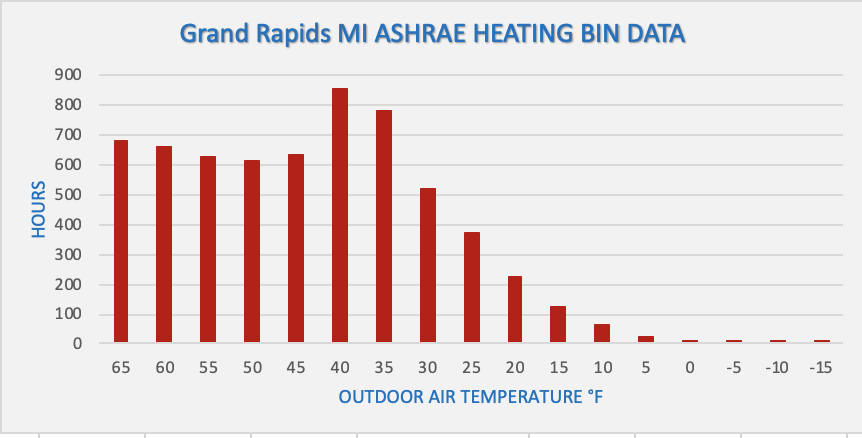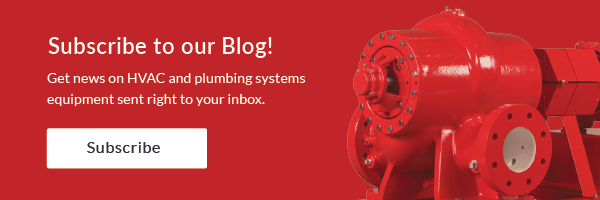 Most hydronic heating and chilled water systems end up with one operating pump and one 100% standby pump. It is easy to understand, and the control is simple. So why even consider parallel pumping?
Most hydronic heating and chilled water systems end up with one operating pump and one 100% standby pump. It is easy to understand, and the control is simple. So why even consider parallel pumping?
Why Consider Parallel Pumping?
When two or more parallel pumps are selected and operated with proper staging, they will save both operating energy and first cost. If that didn’t catch your attention, you may want to stop reading now. Let’s address energy first.
The example chart above is the heating BIN data chart for Grand Rapids, Michigan. Most of the hours are in a temperature range where the two-way valve system will be at a severely reduced flow rate from design. Why not try to match the pumps to the load? Variable speed will save a lot of energy. Variable speed in smaller pumps and smaller horsepower will save even more energy.
First cost implications may be obvious. Smaller pumps at smaller horsepower with smaller pipe sizes will cost less than if everything is larger. I’ll jump into this much more in the upcoming articles.
What is Parallel Pumping?
Figure 1 from the B&G TEH-1109A Parallel & Series pumping manual
Parallel pumping is a method of selection and control of constant or variable speed pumps that mirrors the variable load we see in building comfort systems. We operate a single pump for most of the duty and when more flow is needed, we stage on the next pump.
Today, many systems have one pump designed for 100% of the flow and one pump sitting there as 100% standby. In parallel pumping, the design flow rate is divided between two or more operating pumps. If there are two operating pumps, the load is split 50%-50%. If there are three operating pumps, the load is split 33%-33%-33% and so on. While all the pumps are selected at this reduced percent of the design flow rate, the pump head for all pumps remain at 100% of the design head.
You may use this often if you select and specify plumbing pressure booster systems. It would be a real waste of money and energy to use a pump selected for 100% of the design flow rate in a plumbing system where the normal load is so small compared with the design. This is the primary reason for using 2 or 3 parallel operating pumps in pressure booster systems.
A real advantage of parallel pumping comes into play in hydronic systems. The required flow rate is the intersection of the pump curve and the system curve. I’ll cover this in article 2 of this series in the R. L. Deppmann Monday Morning Minutes.
HVAC Hydronic System Series:
Article 1: What is parallel pumping and why do it?
Article 2: Selecting parallel pumps and the curve
Article 3: Controlling parallel variable speed pumps
Article 4: Parallel pumping and standby capacity
Article 5: Parallel pumping and cost
Article 6: Parallel pumping specifications



